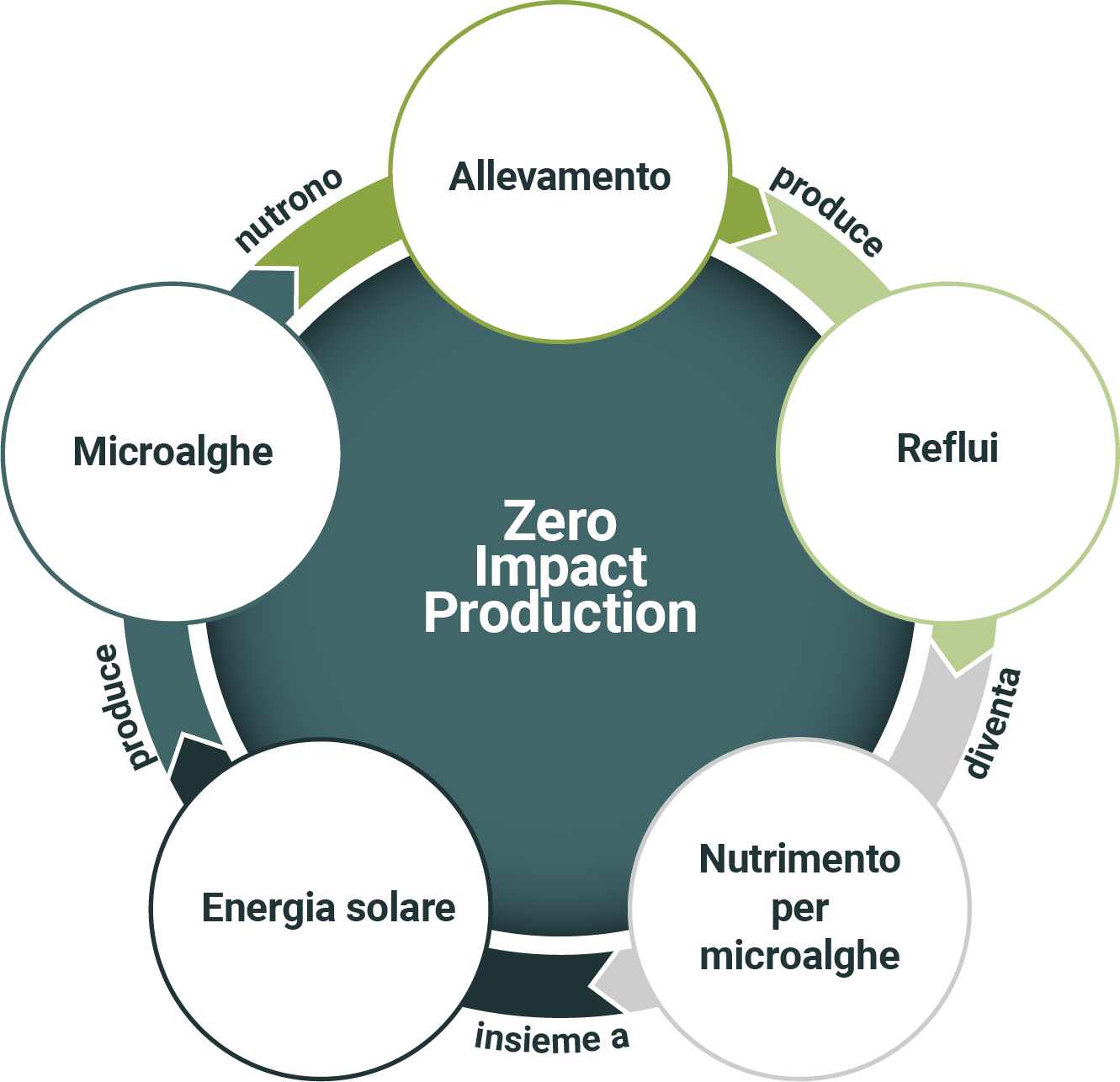Biotechnology
Biotechnology
Technologies for a clean world
Sustainability is the concept that drives our efforts. Our technology involves low consumption and renewable means of production: we convert solar energy for microalgae cultivation, with no water consumption for cultivation.
ZERO IMPACT PRODUCTION

Livegreen's production starts from solar irradiation, which has a dual role: it allows the microalgae to grow through photosynthesis and the production facility to recreate the essential movement of water, through the use of the photovoltaic system that converts solar irradiation into electricity.
Microalgae are the most sustainable source of protein because they do not consume water to grow. In fact, they use water to move, and not as a source of nutrients, so there is no consumption.
By using nutrients from phytodepuration, Livegreen is able to be 100 percent sustainable and without consuming water, in a process where each step is the beginning of the next.
Food for humans, animals and the planet
Microalgae have largely untapped potential: for humanity, for animals and for nature. Indeed, they are capable of converting CO2 and solar energy into essential fatty acids (omega3, 6, 9), proteins, carbohydrates, vitamins and minerals.
Because of their nutritional content, they have important health benefits for humans and animals. By feeding on nitrates and phosphates (substances that are very polluting to the environment), microalgae can be used to reduce contaminants in liquid wastewater from livestock farming or from biogas production.
This allows a doubly positive result: the production cycle is even more sustainable and the negative externality of pollutants is converted into microalgae, which can be used in agricultural and livestock processes.
*Cows fed Spirulina increased production by 21% (Kaunas University, 2007)
* Physical condition of dairy cows improved by 11% when 1.5% Spirulina was added to the diet. (Kulpys et al., 2009
*Daily growth: pigs fed Spirulina grew 15% more. (Simkus, A. et al, 2013)


